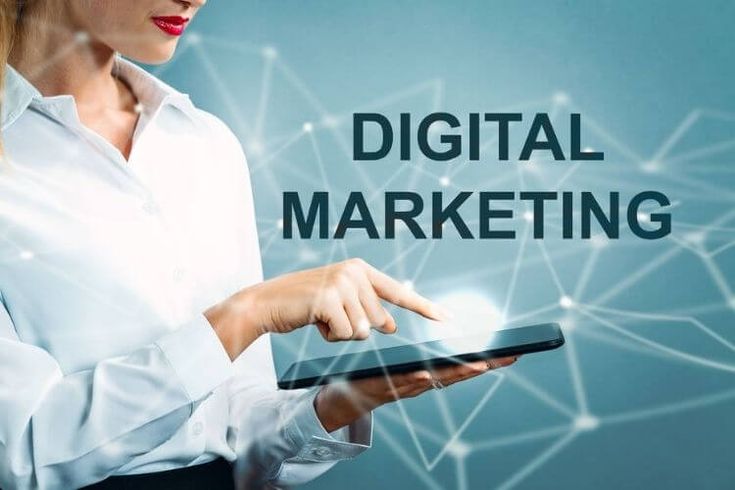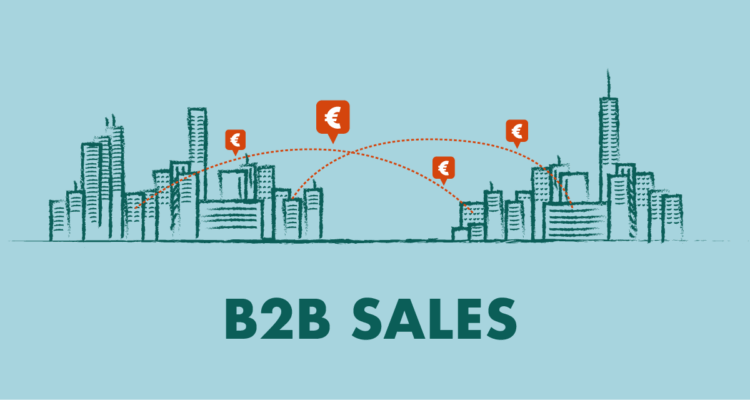The world of Business-to-Business (B2B) marketing is undergoing a seismic shift, a fundamental rewiring of its DNA. The era of lengthy lunches, glossy brochures, and cold calls as primary sales drivers is fading into the rearview mirror. In its place, a dynamic, data-driven, and overwhelmingly digital landscape has emerged. For businesses that fail to adapt, the consequences are not just lost leads but outright irrelevance. This is no longer a conversation about whether B2B marketing should “go digital”; it’s a strategic mandate for survival and a blueprint for unprecedented growth.
Today’s B2B buyers are digital natives. They don’t wait for a sales pitch; they proactively seek solutions. They consume vast amounts of online content—from in-depth blog posts and whitepapers to video testimonials and LinkedIn discussions—long before they ever consider speaking to a sales representative. According to recent studies, a significant majority of B2B buyers now prefer to conduct their own research online. This self-directed journey demands a radical new approach from marketers. It requires a transition from broadcasting a message to becoming a valuable, trusted resource that educates, informs, and guides potential clients through their complex decision-making processes.
This comprehensive guide will navigate the intricate world of modern digital B2B marketing. We will deconstruct the core pillars of a successful online strategy, offering actionable insights and advanced techniques designed to attract, engage, and convert high-value business clients. From the foundational power of content and SEO to the targeted precision of Account-Based Marketing (ABM) and the intelligent automation of lead nurturing, you will discover how to build a formidable digital marketing engine that drives revenue and builds lasting business relationships in this new digital-first reality.
The Unmistakable Catalyst: Why Digital is the New Default in B2B
The migration to digital is not a fleeting trend; it is a response to a permanent change in buyer behavior and the technological environment. Several powerful forces are compelling B2B organizations to reimagine their marketing funnel from the ground up.
A. The Empowered and Anonymous Buyer: Today’s B2B buyer conducts the majority of their research anonymously. They vet vendors, compare solutions, and read reviews on their own terms. By the time they make contact, they are already highly informed and have a shortlist of potential partners. Marketing’s role has therefore shifted from initiating the conversation to influencing the research phase.
B. The Demand for Data-Driven Decisions: Digital marketing is inherently measurable. Unlike traditional methods where ROI can be ambiguous, digital channels provide a wealth of data. Marketers can now track every click, download, and interaction, allowing for precise measurement of campaign effectiveness, lead source attribution, and customer lifetime value. This analytical power enables continuous optimization and smarter budget allocation.
C. The Rise of the Millennial Decision-Maker: Millennials and older Gen Z professionals now occupy key decision-making roles within businesses. Having grown up with the internet, they expect a seamless, personalized, and content-rich digital experience akin to their B2C interactions. They are more likely to be found on professional networks like LinkedIn than at traditional trade shows.
D. Economic Efficiency and Scalability: Digital marketing campaigns can be significantly more cost-effective and scalable than their traditional counterparts. A well-crafted webinar can reach a global audience for a fraction of the cost of sponsoring a physical event. A strategic SEO investment can generate organic leads for years, providing a sustainable and compounding return.
The Pillars of a High-Performance Digital B2B Strategy
A successful digital B2B marketing framework is not about choosing one channel over another; it’s about creating an integrated ecosystem where each component amplifies the others. Here are the essential pillars that form the foundation of a modern B2B powerhouse.
A. Content Marketing: The Engine of Engagement and Trust
In the B2B world, content is the currency of trust. Your expertise is your most valuable asset, and content is the vehicle for showcasing it. B2B buyers are not looking for a sales pitch; they are looking for solutions to complex problems. A robust content strategy educates your audience, builds credibility, and naturally guides prospects through the sales funnel.
- Beyond the Blog Post: While a consistent blog is essential for SEO and thought leadership, high-value B2B content goes deeper. Think comprehensive whitepapers, data-rich industry reports, detailed case studies that prove your value proposition, and insightful eBooks.
- Webinars and Virtual Events: These formats are powerful for lead generation and direct engagement. A well-produced webinar allows you to present complex information in an accessible format, answer questions in real-time, and capture a highly qualified audience.
- Video Content: Video is no longer a B2C-only medium. Explainer videos, product demonstrations, customer testimonials, and behind-the-scenes company culture videos can humanize your brand and make complex products or services easier to understand. Short-form video on platforms like LinkedIn is also gaining significant traction.
B. Search Engine Optimization (SEO): Ensuring You Are Found
You can have the best content in the world, but it’s worthless if no one can find it. SEO is the science of making your website and its content visible to search engines like Google for the specific queries your target customers are using. For B2B, this involves a nuanced approach.
- Intent-Based Keyword Strategy: B2B keyword research focuses less on high-volume, broad terms and more on highly specific, long-tail keywords that signal purchase intent. Think “enterprise cybersecurity compliance software” instead of “cybersecurity.”
- Technical SEO: A well-structured, mobile-friendly, and fast-loading website is crucial. Technical SEO ensures that search engines can easily crawl and index your site, which is the foundation of all other SEO efforts.
- Building Authority through Backlinks: In the eyes of Google, a backlink from a reputable website is a vote of confidence. A strategic B2B backlink strategy involves guest posting on industry publications, getting featured in trade journals, and creating original research that others will want to cite.
C. Account-Based Marketing (ABM): The Art of Precision Targeting

ABM flips the traditional marketing funnel on its head. Instead of casting a wide net and hoping to catch qualified leads, ABM focuses on identifying a specific list of high-value target companies (accounts) and treating each one as a market of one. This hyper-personalized approach is incredibly effective for businesses with long sales cycles and large deal sizes.
- Identifying and Tiering Accounts: The first step is to work closely with your sales team to identify and prioritize target accounts based on your Ideal Customer Profile (ICP). These accounts are then often tiered based on their potential value.
- Personalized Campaigns: Marketing and sales teams collaborate to create bespoke content and campaigns tailored to the specific pain points and needs of each target account. This could involve personalized landing pages, direct mail, targeted digital ads, and custom content.
- Orchestrated Multi-Channel Outreach: ABM is not a single-channel effort. It involves a coordinated attack across email, social media (especially LinkedIn), paid ads, and even personal outreach from the sales team to engage key decision-makers within the target account.
D. LinkedIn Marketing: The B2B Social Media Powerhouse
While other social media platforms have their place, LinkedIn is the undisputed king of B2B marketing. It is a professional network where decision-makers actively seek industry insights, network with peers, and vet potential vendors.
- Optimize Your Company Page: Your LinkedIn Company Page is your digital storefront. It should be fully built out with compelling copy, high-quality visuals, and a clear articulation of your value proposition.
- Empower Employee Advocacy: Your employees are your greatest marketing asset on LinkedIn. Encourage your team, especially subject matter experts and sales leaders, to build their personal brands and share company content. Posts from personal profiles consistently achieve greater reach and engagement than those from company pages.
- Strategic Content Distribution and Engagement: Share your high-value content on LinkedIn, but don’t just post and pray. Use relevant hashtags, tag other companies or influencers where appropriate, and actively engage in the comments to foster discussion. LinkedIn Ads, including sponsored content and InMail, also offer powerful targeting capabilities to reach specific job titles, industries, and companies.
E. Marketing Automation and Email Nurturing: Scaling Personalization
As you generate leads from your content and SEO efforts, marketing automation is the key to nurturing them effectively at scale. It allows you to deliver the right message to the right person at the right time, guiding them from initial awareness to sales-readiness.
- Lead Scoring: Implement a lead scoring system that assigns points to leads based on their demographic information and their online behavior (e.g., pages visited, content downloaded). This helps the sales team prioritize the hottest leads.
- Drip Campaigns: Create automated email sequences (drip campaigns) that nurture new leads over time. For example, a new subscriber who downloaded a whitepaper could receive a series of related articles, followed by a case study, and eventually an invitation for a demo.
- Personalization at Scale: Modern automation platforms allow for deep personalization beyond just using a contact’s first name. You can tailor email content based on a lead’s industry, job role, or the specific content they’ve engaged with, making your communication far more relevant and effective.
Measuring What Matters: Data, Analytics, and ROI

The beauty of digital B2B marketing lies in its measurability. To justify budgets and optimize strategy, you must be laser-focused on the metrics that matter most to the business’s bottom line.
- Key Performance Indicators (KPIs): Move beyond vanity metrics like likes and shares. Focus on KPIs such as Marketing Qualified Leads (MQLs), Sales Qualified Leads (SQLs), Customer Acquisition Cost (CAC), and, most importantly, the marketing-influenced pipeline and revenue.
- Attribution Modeling: It’s crucial to understand which marketing channels are contributing to conversions. Attribution models (e.g., first-touch, last-touch, multi-touch) help you assign credit to the various touchpoints a customer interacts with on their journey, providing a clearer picture of your ROI.
- Leveraging Analytics Tools: Tools like Google Analytics, CRM dashboards, and marketing automation platforms are essential for tracking performance. Regularly review your data to identify what’s working, what’s not, and where opportunities for improvement lie.
The Future is Intelligent: AI and the Next Wave of B2B Marketing
The digital evolution is far from over. The increasing integration of Artificial Intelligence (AI) is set to revolutionize B2B marketing yet again. AI is moving beyond a buzzword to become a practical tool for gaining a competitive edge. It’s powering predictive analytics to identify in-market buyers, personalizing website experiences in real-time, and automating content creation. The future of B2B sales and marketing will be characterized by an even deeper level of personalization and relevance, where AI systems can anticipate customer needs and deliver hyper-targeted solutions before the customer even has to ask.
In conclusion, the digitalization of B2B marketing is complete and irreversible. The new arena is online, and the rules are dictated by the empowered buyer. Success is no longer determined by the size of your sales team but by the strength of your digital presence and the value of the content you provide. By building an integrated strategy founded on the pillars of exceptional content, precision SEO, targeted ABM, strategic social engagement, and intelligent automation, businesses can do more than just participate in the digital marketplace—they can dominate it.












